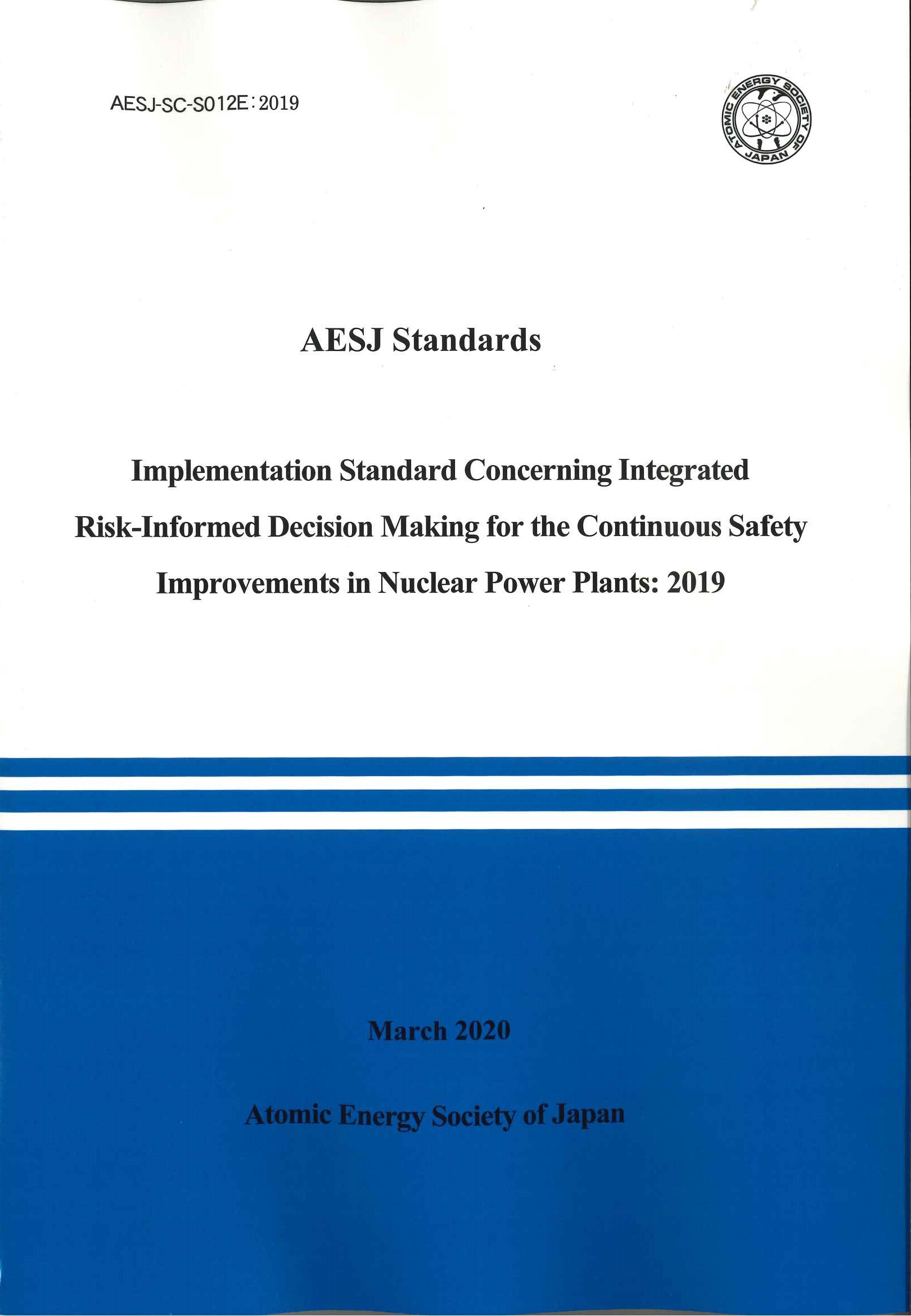販売価格(税込)
会員の方は"会員価格"を選択してください
- ISBN : 978-4-89047-446-2
- 担当部会 : 統合的安全性向上分科会、PRA品質確保分科会
- 版型頁数 : A4/175
- 発行年 : 2022/12/5
- ISBN : 978-4-89047-446-2
- 担当部会 : 統合的安全性向上分科会、PRA品質確保分科会
- 版型頁数 : A4/175
- 発行年 : 2022/12/5
内容紹介
<FOREWORDより>
The “Standard of Implementation on Integrated Risk-Informed Decision Making (IRIDM) for Continuous
Improvement of Safety of Nuclear Power Plants: 2019” was drafted by the Atomic Energy Society of Japan (AESJ)
by establishing a Subcommittee on Integrated Safety Improvement under the System Safety Technical Committee
of the AESJ Standards Committee. The AESJ formulated and issued the Standard after deliberation by the System
Safety Technical Committee and the Standards Committee. This Standard provides for the requirements for
implementing the standardized process of Integrated Risk-Informed Decision Making (IRIDM). The Risk Technical
Committee led the discussion about the requirements for risk assessment.
After the risk information was frequently referred to in discussing about accident management measures in the
early 1990’s, the former Nuclear Safety Commission and Nuclear and Industrial Safety Agency published many
documents about the issues and policies for the utilization of risk information while the deliberation about the safety
objectives and performance objectives was promoted. Meanwhile, the AESJ Standards Committee formulated and
issued the Probabilistic Risk Assessment (PRA) Implementation Standards. In particular, the technical report
published in 2009, “Future Issues and Recommendations Regarding Systematic Development of Codes Related to
Full-Scale Introduction of Risk-Informed Approach” summarized the recommendations to be performed by the
regulatory authorities, electric power companies, research institutes and the AESJ respectively expecting the
“practical use of risk information” beyond the risk assessment itself. At the same time, the Standards Committee
issued the “Implementation Standard for Utilization of Risk Information in Changing Safety Related Activities in
Nuclear Power Plants: 2010” (RIDM 2010 Standard), which provided the technical base required for the
introduction of online maintenance. However, the risk-informed approach was not fully put into practice at that time
although various documents and guidelines were prepared and published in about 10 years. The failure in
establishing the basis for the risk-informed approach was not only caused by the accident at Tokyo Electric Power’s
Fukushima Daiichi Nuclear Power Station in March 2011 but also by the lack of sharing common understanding in
the importance and benefits of utilization of risk information in various decision making processes relate to nuclear
power plants among related organizations and insufficient recognition about the significance of voluntary activities
utilizing objective information.
After the Fukushima Daiichi accident, there has been an increasing demand for the enhancement of nuclear safety
by introducing the risk management system and utilizing the risk information obtained from PRA results even
greater than before the accident from a different viewpoint. As an advancement in introducing the risk-informed
approach, the Nuclear Regulation Authority requires the nuclear power plant operators to perform PRA by
identifying the representative accident scenarios as a part of the safety screening process to check for the
compliance with the new regulatory requirements while the nuclear industry provides risk information including
those related to seismic and tsunami PRA. The electric power companies are running the system for evaluating the
effectiveness of the safety enhancement measures as a useful framework for assessing the safety of their own
nuclear facilities and announcing the measures taken for safety enhancement officially. On the other hand, as the
NPP inspection system in Japan is being reformed, the Reactor Oversight Process (ROP), which is a risk-informed
and performance-based system adopted in the U.S., is being referred to.
In order to maintain and improve the safety of nuclear power plants, it is important for the utilities to
continuously pursue enhanced safety evaluation and improvement measures while thinking and acting by
themselves besides the implementation of safety assurance measures. Similarly, the regulatory system needs to be
consistently reformed and improved. In this regard, it is essential to introduce and establish the integrated
decision-making and management process by collecting various information, such as operating experience and risk
management resources (organizations, funds, time, etc.) as well as risk information, including PRA results and then
evaluating the collected information.
Under the circumstances, this Standard has been developed to provide for the requirements for implementing the
IRIDM process in Japan by referring to the Code of Adopting Continuous Safety Improvement Measures put into
effect in December 2017, which summarizes the process of integrated decision-making utilizing risk information
adopted by various organizations in Japan and abroad. However, it is not always necessary to apply all the
requirements specified in the Code to each activity adopting the IRIDM process; for example, this Standard requires
the use to perform analysis using multiple “key elements while the use allows the user to adjust the applicability of
the key elements depending on the significance of the issue. This Standard introduces several examples of applying
IRIDM process so as to avoid fixed or prescriptive operation of IRIDM. There are currently a few examples of
actual applications, but it is planned to introduce more examples as applications of IRIDM are promoted in future.
The regulatory system in Japan has been radically changed to introduce a new inspection system utilizing risk
information in response to the findings suggested by the Integrated Regulatory Review Service (IRRS) of the
International Atomic Energy Agency (IAEA). In February 2018, 11 Japanese electric power companies submitted
the strategic plan and the action plan toward achievement of risk-informed approach, which describe their policies
aiming at self-sustained enhancement of nuclear safety by pursuing efforts utilizing risk information. It is expected
that the IRIDM Standard will provide the basis for such efforts and future activities to be performed by the
regulatory authorities and electric power companies will be incorporated into the Standard to develop a more
streamlined risk management methodology.


